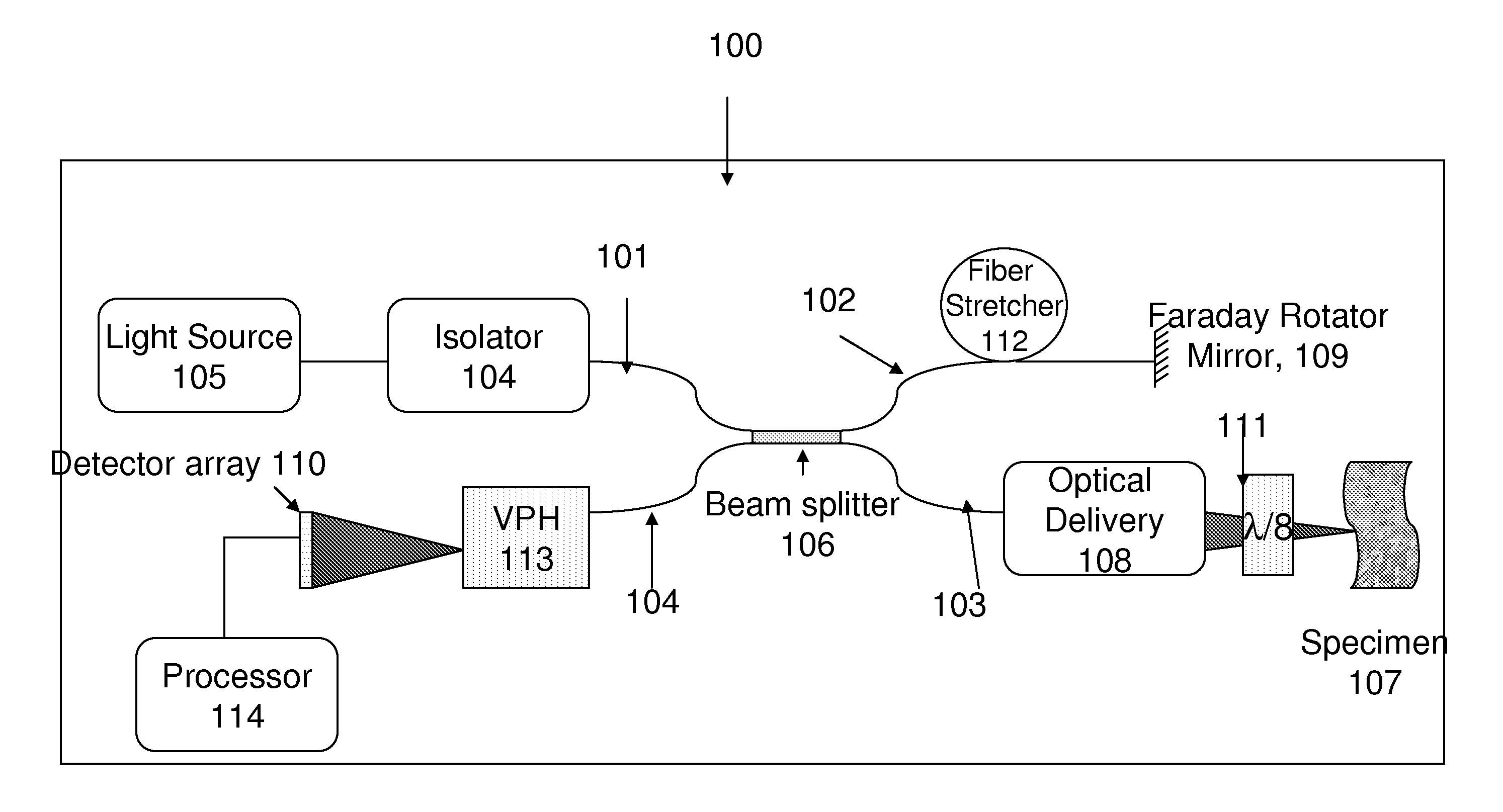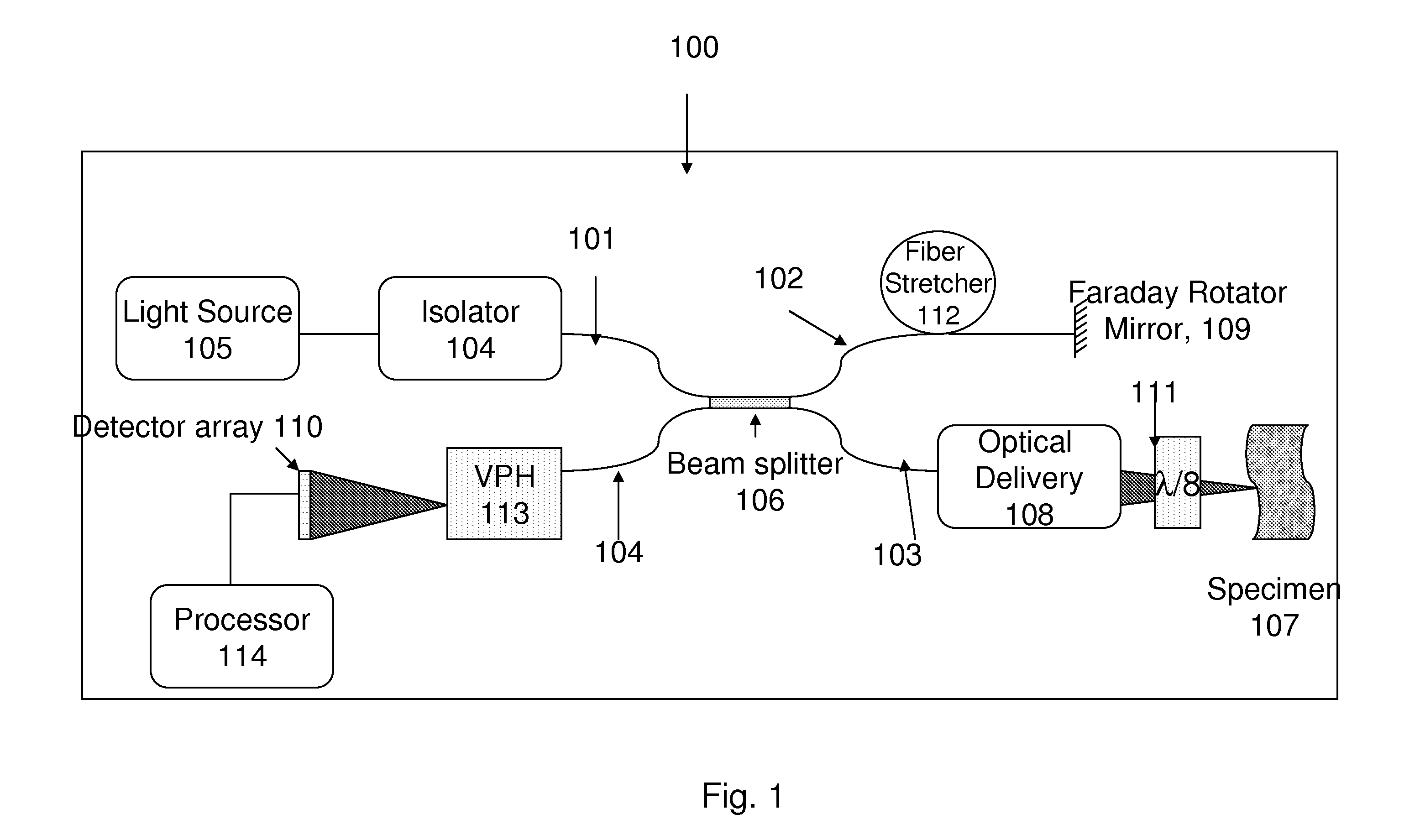Low-cost, compact, & automated diabetic retinopathy diagnostics & management device
a diabetic retinopathy, management device technology, applied in the direction of diagnostics, instruments, medical science, etc., can solve the problems of inconvenient use, high cost, bulky, etc., and achieve the effect of reducing the number of patients, and improving the accuracy of diagnosis
- Summary
- Abstract
- Description
- Claims
- Application Information
AI Technical Summary
Benefits of technology
Problems solved by technology
Method used
Image
Examples
Embodiment Construction
5.1 Optical Coherence Tomography (OCT)
[0016]Optical coherence tomography (OCT) is similar to ultrasound imaging in that cross-sectional images of micro-features are acquired from adjacent depth resolved reflectivity profiles of the tissue (FIG. 1). OCT employs a fiber optically integrated Michelson interferometer illuminated with a short coherence length light source such as a superluminiscent diode (SLD). The interferometric data are processed in a computer and displayed as a gray scale image. In an OCT image, the detectable intensities of the light reflected from human tissues range from 10−5 to 10−11 th part of the incident power.
[0017]Recent OCT systems use spectroscopic detection. Basically the interferometric light exiting the detector arm is dispersed via a grating. The spectra are acquired using a line-scan camera. The resulting spectra are typically (by way of example, not by limitation) transferred to a processor for inverse Fourier transforming and relevant signal process...
PUM
 Login to View More
Login to View More Abstract
Description
Claims
Application Information
 Login to View More
Login to View More - R&D
- Intellectual Property
- Life Sciences
- Materials
- Tech Scout
- Unparalleled Data Quality
- Higher Quality Content
- 60% Fewer Hallucinations
Browse by: Latest US Patents, China's latest patents, Technical Efficacy Thesaurus, Application Domain, Technology Topic, Popular Technical Reports.
© 2025 PatSnap. All rights reserved.Legal|Privacy policy|Modern Slavery Act Transparency Statement|Sitemap|About US| Contact US: help@patsnap.com



